#rko roxy
Text
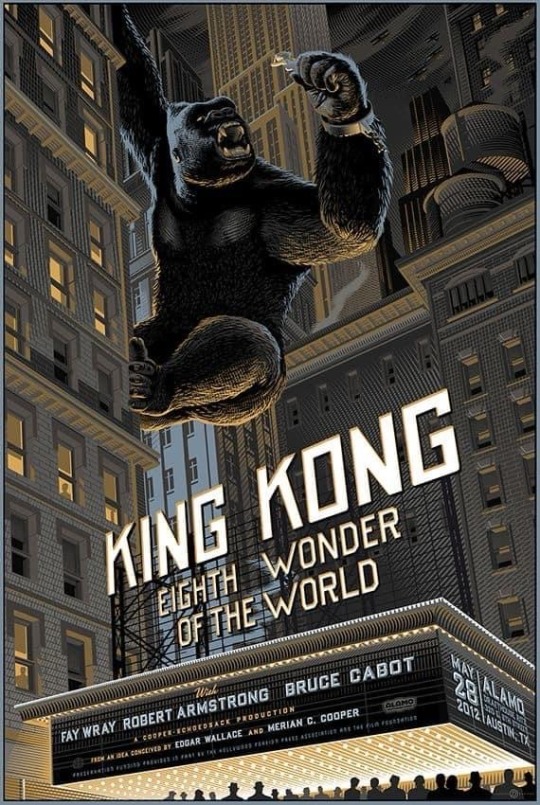
March 2, 1933 "King Kong" film directed by Merian C. Cooper and Ernest B. Schoedsack, starring Fay Wray premieres at Radio City Music Hall and RKO Roxy in NYC.
King Kong opened in New York City on March 2, 1933, to rave reviews. It is ranked by Rotten Tomatoes as the greatest horror film of all time and the fifty-sixth greatest film of all time. In 1991, it was deemed "culturally, historically and aesthetically significant" by the Library of Congress and selected for preservation in the National Film Registry.
13 notes
·
View notes
Text
According to Richard B. Jewell in RKO: rise of a titan, fuckin, the reason Orson Welles second RKO film (the magnificent ambersons) was so bad, was not because of studio meddling in the edit. He was given full edit rights on his first Two contracted RKO films (and despite some other fallen through projects Citizen Kane and The Magnificent Ambersons were his first two edited and distributed films). It was bad because he was telegramming and phoning his edits to his editor in California, from Brazil in 1941-2. Because he was in Brazil to film It's All True, a film that originally was not going to be filmed in Brazil but then Nelson Rockefeller (working for the Office of Inter-American Affairs, also large stockholder in RKO) encouraged RKO to relocate the film to Brazil, meaning Orson Welles went to Brazil immediately following the shooting of but prior to the Cutting of The magnificent ambersons.
So technically Teddy Roosevelt's establishment of the office of Inter-American affairs (or more specifically the appointment of a Rockefeller into it) made The Magnificent Ambersons a bad movie, that was still editorially controlled by Welles just like Citizen Kane was.
#i have no investment in mr welles or his work i just think thats neat snd the wiality between the two varies so wildly most people assume#there was studio interference. and i did before now.#but no. shareholder workong for the government interference.#which a shareholder is far different from the studio itself Rockefeller never worked for rko or within its structure#just owned a lot because of a 7 year long receivership#after rko agreed to pay for rockefeller center offices. and also uh radio city music hall. and the RKO Roxy (demolished) in the rfc.#like at the outset of the Rockefeller center's construction they agreed to that#and then RKO proceeded to. lose money on most pictures. forever.
2 notes
·
View notes
Text

Dracula (1931)
Ad released by Harry Storin, managing director of RKO Albee Theatre, Providence R. I., mocking Roxy Theatre, N. Y. who, out of superstition, didn't dare open Dracula at Friday the 13th.
#dracula 1931#universal monsters#universal horror#1931#1930s movies#tricks and gimmicks#pro level trolling#vintage movie ads
281 notes
·
View notes
Text
90 years ago today!
RKO’s epic production of KING KONG, directed by Merian C. Cooper and Ernest B. Schoedsack and starring Fay Wray, Robert Armstrong, and Bruce Cabot, made its world premiere in New York City’s Radio City Music Hall and Roxy Theater on March 2, 1933. #OnThisDay #KingKong

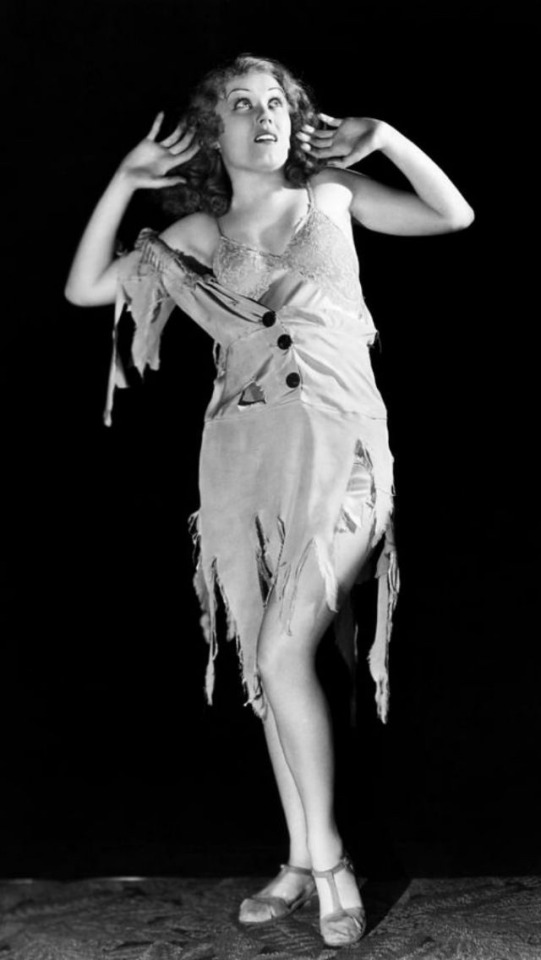




36 notes
·
View notes
Text
Emc2
Emc2 (171520 words) by Unda
Chapters: 14/?
Fandom: Homestuck
Rating: Teen And Up Audiences
Warnings: Graphic Depictions Of Violence, Major Character Death
Relationships: Dave Strider/Karkat Vantas, Sollux Captor/Dave Strider, Jake English/Dirk Strider, Dave's Bro | Beta Dirk Strider/Rose's Mom | Beta Roxy Lalonde, Rose Lalonde/Kanaya Maryam, The Disciple/The Psiioniic | The Helmsman/The Signless | The Sufferer, Jane Crocker/Roxy Lalonde, Jade Harley/Nepeta Leijon, John Egbert/Terezi Pyrope, Auto-Responder | Lil Hal/Equius Zahhak, John Egbert/Vriska Serket
Characters: Dave Strider, Rose Lalonde, Dirk Strider, Roxy Lalonde, Dave's Bro | Beta Dirk Strider, Rose's Mom | Beta Roxy Lalonde, John Egbert, Jane Crocker, Jade Harley, Jake English, Karkat Vantas, Sollux Captor, Nepeta Leijon, The Signless | The Sufferer, The Psiioniic | The Helmsman, The Disciple (Homestuck)
Additional Tags: flashing images, Embedded Images, Embedded Video, Child Abuse, Alcohol Abuse/Alcoholism, Alternate Universe - Soulmates, Soulmate-Identifying Marks, Trolls on Earth (Homestuck), Child Neglect, Polyamory, Internalized Homophobia, Homophobic Language, SBURB (Homestuck), Alternate Timelines, More ships to be added, Breaking the Fourth Wall, Canon-Typical Violence, Involuntary Hospitalization
Series: Part 31 of It's the end of the world as we know it
Summary:
Dave is following the plan, living on borrowed time until he can do what a big brother should and get everyone the fuck out of their terrible lives and start living for real. Until then, it’s really not the right time to be anyone’s soulmate. Hopefully the people on his skin won’t have any conflicting plans. Dirk also has a plan, to be actually useful to his big brother no matter what it takes, something that will definitely not have any unexpected consequences at all.
~~~~~~~~
written by coalition member @unda-dsk and beta'd by coalition member RKO, this fanfic is a remix of the famous davekat soulmate fic MC Escher! now with more sollux ;)
#dave strider#dave#davekat#davesol#sollux#sollux captor#karkat#karkat vantas#mc escher thats my favorite mc#homestuck
3 notes
·
View notes
Note
helloooo this is your santa!!! i hope you had a great weekend :)))
i'm happy you like johnny cash's album! to bo perfectly honest, i don't think i'd like this album as much as i do if it weren't live, as you said, it adds so so much to it.
i recommend count basie, he's my favorite big band director i think!! you should listen to his album prime time, and especially the music "bundle o'funk" which is, as said in the title, very funk with still old school jazz elements (it's my favorite music from the album) ; also "lady be good" by mel tormé (my fav jazz singer, he sure knows how to scat). if you want to listen to pre-60s jazz, i recommend count basie (again), duke ellington ; i love benny carter, zoot sims, wynton kelly, curtis fuller, to name a few :^)
that's also how i discovered rhps!! there are not many movies that run at a shadow cast i believe, at least i've never seen or heard about any other movie that way. oooh very 70s queer-coded movies i see ahah! my favorite movies are mainly the back to the future trilogy, we used to watch them on vhs with my brothers every summer, the three in a row. i guess i love them so much bc of nostalgia but also bc i think it's very well written and fun
how did you get into """old""" music? what/who was your first favorite band/musician?
see you later!
Hii! I hope you had a good weekend as well :D It really seemed to fly by lol
I listened to Prime Time and I really enjoyed it! Bundle O’Funk, The Great Debate, and Ya Gotta Try were all so fun, and I really loved Featherweight. I can definitely see me adding this album, and more of Count Basie’s work, into my regular rotation of jazz music :D I’ll also be sure to listen to Mel Tormé at work tomorrow!
My local cast actually put on a Shadow Cast performance of Shock Treatment, and it was amazing! I’ve heard of Repo! The Genetic Opera, Reefer Madness, and Dr. Horrible being shadow casted, but unfortunately they’re very uncommon. I’ve only heard of them being done at conventions, RKO Con specifically I think.
I’ve only seen the first Back to The Future movie, but I remember really liking it, so might have to binge watch the other two over winter break. :D
My parents played a lot of classic rock growing up, so I picked up a lot of music from them. I remember really liking the Beatles as a kid.
Once I got into middle school I kinda strayed away from older music. I mostly listened to emo, indie, vaporwave, and folk, but I did still have a soft spot for Pink Floyd.
It was only until early high school that I got back into older music. During lockdown I got really into Guitar Hero, and it got me back into a lot of 80’s bands like Talking Heads, DEVO, Squeeze. I also ended up getting back into The Beatles, mainly their late 60’s stuff like Sgt. Pepper’s and Abbey Road.
The way I got into 70’s music is kinda funny. I was looking up Roxy Lalonde on Pinterest (I hate to admit it, but I was a Homestuck fan), and a picture of Roxy Music came 14 year old me was like, “Woah!! Those guys look so cool!!!” so I started listening to them lol. From there I listened to whatever people in the YT comment sections recommended, and that led me down the prog rabbit hole.
How about you? How’d you get into older music? Also, I remember that you brought up Pink Floyd and the Beatles yesterday, what would you say are your favorite songs/albums by them? I hope you have a good night! :D
0 notes
Text





Center Theatre (New York City)
The Center Theatre was a theater located at 1230 Sixth Avenue, the southeast corner of West 49th Street in Rockefeller Center in New York City. Seating 3,500, it was originally designed as a movie palace in 1932 and later achieved fame as a showcase for live musical ice-skating spectacles. It was demolished in 1954, the only building in the original Rockefeller Center complex to have been torn down.[
History
Radio City - RKO Roxy Theatre ad from, The Film Daily, 1932
The Center Theatre was originally called the RKO Roxy Theatre and built as part of the construction of Rockefeller Center. The RKO Roxy started construction in November 1931,[2] and it opened December 29, 1932 with the RKO film The Animal Kingdom and a live stage show. It was intended as a smaller sister to the 6,000 seat Radio City Music Hall one block away, which at first did not show films. The smaller theater was named after producer Samuel L. Rothafel, aka "Roxy", who was engaged by Rockefeller Center to supervise the design and operation of the two theaters.[3][2] After the initial failure of the Music Hall in its first weeks, Rothafel suffered a heart attack and never returned to his new theaters. A successful lawsuit in 1933 by the owners of the original Roxy Theatre on Seventh Avenue, claiming ownership of the "Roxy" name, caused the new theater to be renamed the RKO Center.
The Center Theatre featured an elegant Art Deco design which was muted by comparison to the lavish Radio City Music Hall. The architect was Edward Durrell Stone and decor was by Eugene Schoen. The spare but striking design featured curved walls paneled in mahogany. It had a three-tiered metal chandelier weighing six tons, and a ceiling studded with circles decorated in half-relief with mythological figures. Three shallow mezzanines provided an unobstructed view of the stage. The large stage contained turn-screw lifts as did the orchestra pit. There was also a 34-rank Wurlitzer theatre organ with a single stained wood console at stage right similar to the Radio City Wurlitzer twin consoles which were finished in ebony. Betty Gould and Raymond Bohr were some of the organ's featured artists.[4]: 46
Originally operated by the RKO movie theater chain, the Center was soon overshadowed in the movie business by the hugely popular Music Hall. In 1934 it converted to presenting Broadway plays and musicals. Now called the Center Theatre, it offered The Great Waltz and a few other shows but the theater was too large to find lasting success in this venture either.
The last feature film to play at the theatre was Walt Disney's Pinocchio in 1940.
Looking for a way to make the Center Theatre profitable, Rockefeller Center, inspired by the theatrical success of figure-skating champion Sonja Henie, converted it into a theater expressly designed for the presentation of musical ice shows.[4]: 51 This venture was headed by G.S. Eyssell, executive manager of Rockefeller Center, and Arthur M. Wirtz, of Chicago. RKO Roxy Theatre, 49th Street, New York, N.Y., 1932
An ice stage 100 feet (30 m) wide with a skating surface of 7,000 square feet (650 m2) was built in the theater. Beneath it 28,000 feet (8,500 m) of pipe were laid, capable of continuously circulating a freezing solution at the rate of 500 US gallons per minute (1,900 L/min). For the surface, specially designed ice-making machinery was installed. The result was a permanent frozen stage surface that was ideal for skating.
As an ice theater, the Center Theatre reopened on October 10, 1940 with the presentation of Sonja Henie's production, It Happens on Ice, first of the musical ice spectacles. This proved to be a popular new form of entertainment. The show was a huge success, attracting greater than 1.5 million people during its run. For the next several years the Center offered more ice spectacles produced by Henie and Wirtz, including: Stars on Ice, Hats Off to Ice, Icetime, and Howdy Mr. Ice. In addition, during this time the Center was the home for the spring season of the San Carlo Opera Company from 1944 to 1949.
The Center Theatre had never been able to become a consistently profitable venture for Rockefeller Center.[5] In 1951, the theatre was leased by NBC and became a venue for live television broadcasts. Many early programs, including The Voice of Firestone and Your Show of Shows, were broadcast from the Center Theatre. Two years later, the United States Rubber Company indicated that it wanted to expand the U.S. Rubber Company Building above the Center Theatre, meaning that the theater had to be closed and demolished to make way for the extra office space.[6]
After 21 years of operation, the Center Theatre was demolished in 1954 and replaced with a 19-story addition to the U.S. Rubber Company Building. The final production at the theatre was the New York-portion of the 1954 Academy Awards, when Audrey Hepburn won Best Actress for Roman Holiday.[5] During the demolition process, the U.S. Rubber Building above it was put on temporary stilts, with the offices above the former theater still being occupied during the demolition process.[7] Doors, lamps, and other furnishings were sold off to the Cherry Lane Theatre in the West Village.[8] Bob Jones University purchased the stage lifts and turntables from the Center Theatre and reassembled them in its Rodeheaver Auditorium, where the mechanisms are still in use today.[9]
Known for most of its short life as the Center Theatre, this Art Deco-style movie palace on the southeast corner of Sixth Avenue and 49th Street was located in the south block of Rockefeller Center. It opened as the New RKO Roxy Theatre on December 29, 1932 with a stage show and the movie "The Animal Kingdom," starring Leslie Howard and Myrna Loy. Two days earlier, its larger sister theatre, Radio City Music Hall, had opened with a stage show-only policy, under the direction of S.L. "Roxy" Rothafel.
The lobby had three ticket offices. The Grand Foyer was illuminated by day through five large exterior windows of opaque glass etched in relief. During darkness, the lighting was via three glass globes at ceiling height and two glass globes hanging lower. It was decorated in red and gold fabric with Bubinga mahogany walls and vermilion doors leading to the auditorium.
The auditorium had 75-foot-high walls that were paneled with African mahogany and a ceiling decorated with figures from Greek mythology. Centered over the orchestra section was a 400-bulb, 104,000-watt chandelier, 25 feet in diameter and weighing six tons. Claimed as the largest of its kind, the fixture required its own fan cooling system. The proscenium opening was 60 feet wide and extended in height from stage floor to the ceiling. Just as in Radio City Music Hall, the New RKO Roxy Theatre had three shallow mezzanines, with respective seating capacities of 406, 655 and 559. The orchestra accomodated 1,890, giving the theatre a total capacity of 3,510. The Grand Foyer was also similar to that at Radio City Music Hall in that it had a wide staircase and elevators to the top mezzanine, and a Grand Lounge in the basement.
In March 1933, the New RKO Roxy Theatre and Radio City Music Hall shared the New York premiere engagement of "King Kong." Both theatres supported the movie with a stage show, "Jungle Rhythms."
After successful litigation by the owners of the original Roxy Theatre on 7th Avenue and 50th Street, the New RKO Roxy was renamed the RKO Center Theatre in 1933, and it began to feature less costly second-run double bill film programmes. In 1934, "RKO" was dropped from the Center's name when it opened its first legitimate production, "The Great Waltz." When the show closed, the Center Theatre attempted showing films again. In February 1940, it hosted the New York premiere engagement of Walt Disney's "Pinocchio." Movies did not succeed here, and the Center Theatre returned to presenting live shows, including some 'Ice Spectaculars,' until it closed and became an NBC studio in 1950.
By the time NBC's lease expired, in May 1954, a decision had been made to demolish the theatre. In its place an office skyscraper that blended with other buildings in Rockefeller Center was built.




1 note
·
View note
Text

March 2, 1933: "King Kong" directed by Merian C. Cooper and Ernest B. Schoedsack, starring Fay Wray premieres at Radio City Music Hall and RKO Roxy in NYC.
33 notes
·
View notes
Text
LUCY IN NEVERLAND
1939-1973
Lucille Ball and her various film and television projects had a loose connection to Peter Pan, the boy who wouldn’t grow up from the J.M. Barrie story that served as a play in 1904, and a novel in 1911. It was later translated into numerous stage and screen adaptations, and inspired many others.
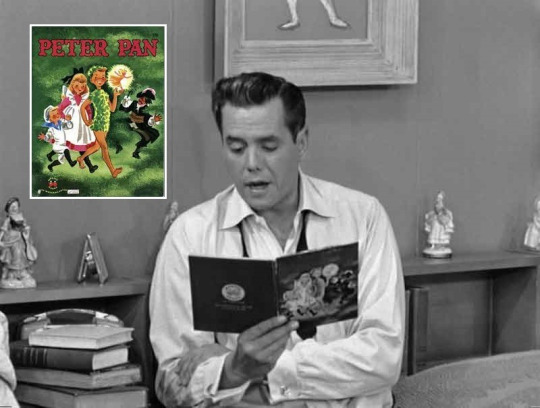
n 1953′s “Lucy Hires An English Tutor” (ILL S2;E13) pregnant Lucy made Ricky read aloud from the book to test his command of the English language. Fans will realize that the text Desi reads in the episode has nothing to do with Peter Pan! The children’s book is just a prop.

The choice of book may not have been coincidental since the guest star, Hans Conried (playing Mr. Livermore), had just voiced Captain Hook for the Disney animated feature film of Peter Pan to be released just a month later, in February 1953. Conried was a favorite of Lucille’s, having made dozens of guest appearances on her radio show “My Favorite Husband.”
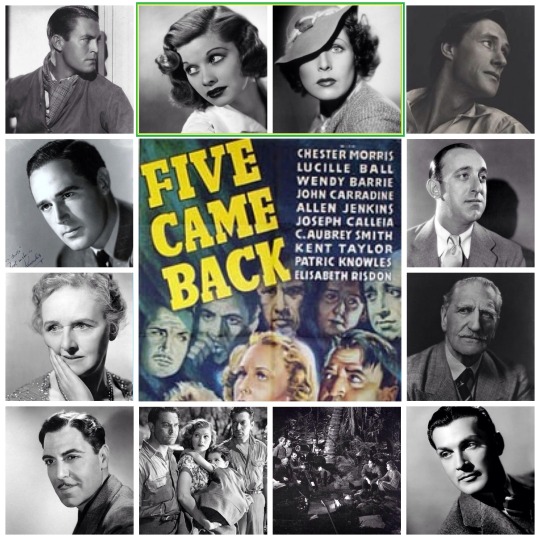
The ‘Peter Pan Connection’ actually began in 1939, when Lucille Ball starred in the RKO ensemble film Five Came Back. One of the ‘five’ was Wendy Barrie (top with Lucille). Although born as Marguerite Wendy Jenkins, she took the stage name Wendy Barrie in honor of her Godfather, author J.M. Barrie. Not coincidentally, Wendy is also the name of the eldest Darling child in “Peter Pan.”

In a March 8, 1955 episode of “Make Room for Daddy” titled “Peter Pan” Danny’s 7-year-old son Rusty imagines that he can fly like Peter Pan, so his father invites the theater's elderly stagehand to the house to dispel the fantasy and bring Rusty back down to Earth. The characters lived in New York City and had seen Mary Martin (who did not appear in the episode) in the musical production at the Winter Garden Theatre. In reality, the stage production closed on February 26th to prepare for a live television broadcast on NBC, which aired on March 7, 1955, one night before this episode aired. Danny Thomas sings a song from the stage show at the end of the episode. Mary Martin was mentioned on “The Lucy Show” in 1964 by guest star Ethel Merman, who was also a big Broadway star like Martin.
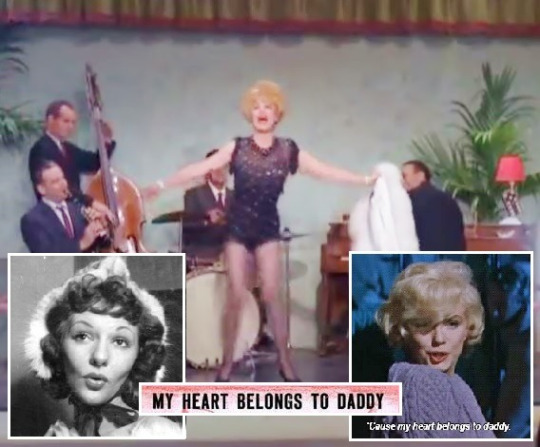
In “Lucy the Gun Moll" (TLS S4;E25) in 1966, Lucille Ball not only played Lucy Carmichael, but a nightclub singer named Rusty Martin who sang “My Heart Belongs To Daddy”. The name 'Rusty Martin’ was probably derived from Lucy’s hair color and the surname of Mary Martin, who introduced the song in the 1938 Broadway musical Leave It to Me. Marilyn Monroe sang it in the 1960 film Let’s Make Love.
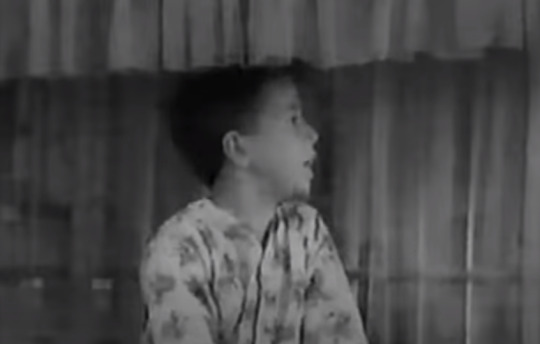
Desilu Studios was the filming location for "Make Room for Daddy”. When it switched from ABC to CBS in 1958, the show did a cross-over episode with “The Lucy-Desi Comedy Hour”. In return, Lucy and Desi appeared on “Make Room for Daddy.” Coincidentally, Hans Conried, who voiced Captain Hook in the Disney animated version, was a recurring character on “Make Room for Daddy” as Uncle Tonoose.

In “Return Home from Europe” (ILL S5;E26) aired on May 14, 1956, Ricky comes up with the idea to fly home from Europe instead of taking the steamship, When Ricky wonders whether he’ll make it back in time to perform at the Roxy, Lucy evokes the name Peter Pan, the main character of the J.M. Barrie children’s story of the boy who wouldn’t grow up - but could fly (without help from Pan Am, that is).

In “Vivian Sues Lucy” (TLS S1;E10), Lucy Carmichael calls Vivian ‘Tinkerbell’ due to her propensity for ringing her bedside bell while (supposedly) incapacitated.

In “Lucy and the Winter Sports” (TLS S3;E3) aired on October 5, 1964, Lucy Carmichael skis off the roof and lands on Mr. Mooney! He had just bent over to tie his shoe...

In 1966′s “Danny Thomas’ The Wonderful World of Burlesque” Lucille Ball performed an aerial ballet. Peter Foy, of the famous Foy Family (who did flying on Broadway for “Peter Pan” and other shows), was brought in to supply rigging and supervise Ball’s flight. Film of the act later became part of their archives.

In “Lucy Meet Mickey Rooney” (TLS S4;E18) in 1966, Lucy Carmichael claims to have played Captain Hook in “Peter Pan” while in school.

in “Lucy’s Tenant” (HL S6;E7) in 1973, Lucy Carter sarcastically calls Mary Jane Peter Pan when she brings up Lucy’s age!
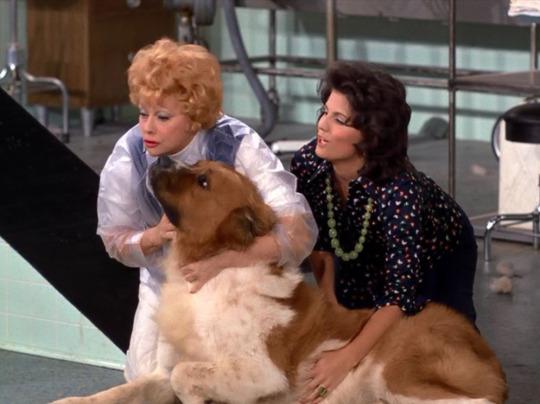
In “The Bow Wow Boutique” (HL S6;E5) aired on October 8, 1973, a Saint Bernard is named Tinkerbell. In “Peter Pan” Tinkerbell is the name of the fairy who is Peter’s closest friend. Not coincidentally, the Darling children have a St. Bernard dog named Nana, who serves as a pet and a nanny.

February 1963
#Lucille Ball#Peter Pan#JM Barrie#Wendy Barrie#Five Came Back#The Lucy Show#Here's Lucy#I Love Lucy#Desi Arnaz#Vivian Vance#Make Room for Daddy#Mary Martin#Rusty Hamer#Hans Conried#Captain Hook#danny thomas
37 notes
·
View notes
Photo










Radio City Music Hall, Manhattan (No. 3)
Construction on Radio City Music Hall started in December 1931, and the hall topped out in August 1932. Its construction set many records at the time, including the use of 15,000 miles (24,000 km) of copper wire and 200 miles (320 km) of brass pipe. In November 1932, Russell Markert's précision dance troupe the Roxyettes (later to be known as the Rockettes) left the Roxy Theatre and announced that they would be moving to the Music Hall. By then, Roxy was busy adding music acts in preparation for the hall's opening at the end of the year.
The Music Hall opened to the public on December 27, 1932, with a lavish stage show featuring numbers including Ray Bolger, Doc Rockwell and Martha Graham. The opening was meant to be a return to high-class variety entertainment. However, the opening was not a success: the program was very long, spanning from 8 p.m. to 2 a.m. of the next day, and a multitude of acts were crammed onto the world's largest stage, ensuring that individual acts were lost in the cavernous hall. As the premiere went on, audience members, including John Rockefeller Jr, waited in the lobby or simply left early. Some news reporters, tasked with writing reviews of the premiere, guessed the ending of the program because they left beforehand. Reviews ranged from furious to commiserate. The film historian Terry Ramsaye wrote that "if the seating capacity of the Radio City Music Hall is precisely 6,200, then just exactly 6,199 persons must have been aware at the initial performance that they were eye witnesses to [...] the unveiling of the world's best 'bust'". Set designer Robert Edmond Jones resigned in disappointment, and Graham was fired. Despite the negative reviews of the performances, the theater's design was very well received. One reviewer stated: "It has been said of the new Music Hall that it needs no performers; that its beauty and comforts alone are sufficient to gratify the greediest of playgoers."
On January 11, 1933, after incurring a net operating loss of $180,000, the Music Hall converted to the then-familiar format of a feature film, with a spectacular stage show that Roxy had perfected. The first film shown on the giant screen was Frank Capra's The Bitter Tea of General Yen, and the Music Hall became the premiere showcase for films from the RKO-Radio Studio, with Topaze the first RKO film to play there. The film-plus-stage-spectacle format continued at the Music Hall until April 25, 1979, with four complete performances presented every day; the final film the Music Hall presented under this format was The Promise (1979). Some of the films that premiered at Radio City Music Hall included King Kong (1933), Breakfast at Tiffany's (1961), To Kill a Mockingbird (1962), Mary Poppins (1964), and The Lion King (1994). In total, over 650 movies are said to have premiered at the Music Hall. The hall was also used for other purposes; for instance, it was used to host Easter worship services starting in 1940, as well as benefit parties for Big Brothers Inc. from 1953 to at least 1959.
Source: Wikipedia
#Radio City Music Hall#Midtown Manhattan#New York City#brass#detail#relief#original photography#Art Deco#summer 2019#2018#exterior#USA#travel#vacation#cityscape#architecture#Edward Durell Stone#Donald Deskey#daylight#neon sight#night shot#neon light#6th Avenue#1260 Avenue of the Americas#street scene#yellow cab#car#Con Edison
1 note
·
View note
Photo






One of the great, lost movie theaters of New York City, the RKO Roxy Theatre was like a little sibling to Radio City Music Hall, both of which opened in December 1932 on the Sixth Avenue side of Rockefeller Center. It wasn’t as large or as sumptuous as Radio City, but it still boasted a distinctively elegant Art Deco design. Intended to be a movie palace, it claimed to have the largest chandelier in the world in its auditorium, and when visitors weren’t busy enjoying the entertainment, they could descend from the Grand Foyer to the Grand Lounge in the theater’s basement. In spite of the building’s charms, however, it was never a great commercial success. Known as the Center Theater for most of its existence, it tried hosting live shows, television broadcasts, and even some ice skating, before eventually being demolished in 1954.
Discover more images of lost New York in our Digital Collections!
Irving Browning, RKO Roxy Theatre series, 1932 (New-York Historical Society)
416 notes
·
View notes
Photo

January, 1934. Samuel H Gottshco. View to El at 6th Ave and 49th St. RKO Center Theatre opened as RKO Roxy Theatre in 1932. Demolished 1954. Hotel Maryland (104 W 49th St) across the street.
10 notes
·
View notes
Photo

March 2, 1933 - "King Kong" film directed by Merian C. Cooper and Ernest B. Schoedsack, starring Fay Wray premieres at Radio City Music Hall and RKO Roxy in NYC #KingKong #FayWray #FilmmakersOn #GasMoneyPictures {www.filmmakerson.com} https://www.instagram.com/p/BujcowZlgI2/?utm_source=ig_tumblr_share&igshid=1upcc8lmy35fa
0 notes
Photo

The movie King Kong directed by Merian C. Cooper and Ernest B. Schoedsack starring Fay Wray premieres on today's date March 2, 1933 at New York City's Radio City Music Hall and at the RKO Roxy.
The stop motion animation of the titular King Kong was done by Willis O'Brien and his assistant Buzz Gibson.
#KingKong #MovieHistory #CinematicHistory #HollywoodHistory #FayWray #MerianCCooper #ErnestBSchoesdsack #Animation #StopMotionAnimation #WillisOBrien #BuzzGibson #ClassicMovie #SciFi #Comic #Comics #ComicBook #ComicBooks #SiscosFavoriteComics
https://www.instagram.com/p/Bug8yGnhVIk/?utm_source=ig_tumblr_share&igshid=4arhh6nomtdz
#King Kong#Film History#Movie History#Cinematic History#Hollywood History#Fay Wray#Merian Cooper#Ernest B. Schoesdack#animation#willisobrien#Stop Motion Animation#Willis O' Brien#Buzz Gibson#Classic Movie#scifi#comic#comics#comic book#comic books#siscosfavoritecomics
0 notes
Photo









Hildreth Meiére (1892-1961) was one of the most influential and creative decorative artists of the Twentieth Century whose achievements gained the recognition of the established art world.
She worked in a variety of mediums and in partnerships with renowned architects. Her work helped to introduce Art Deco to America.
Meiére knew early on that she wanted to be an artist. Her mother, who was an aspiring painter before her marriage, took her to Italy as a graduation present in 1911, and she witnessed firsthand the amazing murals and mosaics of the region. This influenced her direction in life, and she began to pursue a career as a muralist. During WWI, she served in the Navy as a draftsman. She enrolled in the Art Students League upon her return to New York, and then at the California School of Fine Arts in San Francisco. There, she became active in the local theater scene, often sketching and painting theater goers and ballet performances, and designing costumes and sets; this was a field that was easy to work in as a woman.
When she returned to New York, she enrolled in the New York School for Applied Design for Women, only because the Beaux-Arts Academy did not accept women at the time. Instruction in the decorative arts was considered “appropriate” for women, as it often related to the home sphere, and didn’t directly compete with established male commercial artists. Her connections, talent, and her well-honed social skills allowed her commissions for large-scale projects. The architect Bertram Grosvenor Goodhue recognized her talent early on, and not only her talent, but her “large ambition.” He taught her how to balance secular and liturgical commissions, to work with a space’s intended narrative, and within the collaborative process.
Among many awards, she was the first woman honored with the Fine Arts Medal of the American Institute of Architects, where her papers are currently archived, and she was the first woman appointed to the New York Art Commission. She joined the Architectural League in 1939, and wore a black tie with an extremely low-cut black evening dress to her inaugural dinner. This was a full six years, of course, after they had awarded her the gold medal for Outstanding Muralist.
She often worked in collaboration with the architects of the buildings, designing decoration and imagery that would help support the narrative of the space. Her first important commission was the decoration, in painted and gilded raised gesso, of the Great Hall of the National Academy of Sciences in 1923, designed by Goodhue. By the 1930s, she was considered the most famous muralist of the Art Deco style, and probably the most prolific in the country. Meière’s specialty was the ancient and beautiful art of mosaic, which is still featured in over a hundred commissions from New York to California. After her initial design was complete, it would be sent to European glass studios, translated to mosaic, and shipped back in enormous pieces. Because of the process and collaborative nature, she became an adept director of many people and a savvy businesswoman.
During the Depression, she worked with the WPA to create several painted murals, and created works for the 1933 and 1939 World’s Fairs. She was asked to create designs for the newly completed Rockefeller Center, RKO Roxy Theater (demolished in 1954) and Radio City Music Hall. She presented her designs to John. D. Rockefeller, who was shocked by her use of naked bodies. However, the finished designs weren’t much different than her original vision, nudity included.
When she worked, there were few women in the professional arts at the time, and muralists especially were dominated by men. When asked about it: “Only that a woman has to be more efficient than a man. If one woman falls down, it makes it so much harder for other women in the same field. Because I am a woman, I had to be 100% dependable and I don’t mind the challenge.”
#hildreth meiere#mural#mosaic#rockefeller center#radio city music hall#Women in Illustration#women in art#women's history month#women artists#1930s#art deco#murals
18 notes
·
View notes
Text
BELATED HONEYMOONERS IN DETROIT
February 7, 1941


BY FRANK P. GILL
A handsome young Cuban troubadour, who owes his start in show business to his country's predilection for revolutions and cuartelazos (army rebellions), and a pretty and popular film star, who has time on her hands between pictures, popped into Detroit Thursday with a sigh of relief.
The troubadour, Desi Arnaz, has come to the Motor City for a definite purpose: to carol the canciones of his native land nightly in the Terrace Room of the Hotel Statler, with Fausto Curbelo's band. The film star, Lucille Ball, just came along for the ride.
Actually this trip is part of a belated honeymoon for these two, who were marked between shows at the Roxy Theater in New York last November. They've been trying to have a honeymoon ever since, but Desi's night club commitments and Miss Ball's film work have proved serious handicaps at times.
Detroit Last Stop
"Our things aren't even unpacked," Miss Ball said, wryly, shortly after they arrived in town. "We're now In the third phase of our honeymoon. Thank goodness! Detroit's the last stop before we go back to California to settle down." This doesn't mean, of course, that either of them is quitting show business. Miss Ball recently finished "A Girl, a Guy and a Gob," Harold Lloyd's initial directing effort for RKO-Radio Pictures. Plans are afoot, she told us, to co-star her with her groom In "Havana," a Latin musical. (**)
But, to the honeymooners. Miami was their last stopping place, where, while Desi sang nightly at the Rhumba Casino, Miss Ball vacationed. They were both bursting to talk about the Florida resort when they arrived; Desi because that city was his first show home, Miss Ball because she went fishing, a favorite sport with her, and caught a shark.
Revolution In Cuba
In 1933, the young singer explained, during the revolution against Machado, his father, a congressman, was jailed by the revolutionists. Six months later he was released and was "told to take a trip."
"We came to Miami," Desi said. "I had to leave school, where I was getting ready to study law. We had no money, so I decided I had to make some, fast. The only thing I could do was to sing songs with a guitar to please my father. I started out to get job and finally landed one in a hotel, where they paid me $5 a night to sing. I thought it was robbery," he added, laughing, "to pay me for what I liked to do for amusement."
Later Xavier Cugat heard him and gave him a job as a vocalist. Later he formed his own band, and still later went into the cast of “Too Many Girls," which brought him, eventually, to Hollywood, where he met hit bride In pictures.
** = “Havana” was filmed by Columbia in 1949 as ‘Holiday in Havana’. Although Desi Arnaz played the leading role, the part of his love interest was not played by Lucille Ball, but by Mary Hatcher.

During Desi’s engagement, a fan wrote to Lucy and Desi asking if she could introduce herself. Naturally, the Arnaz’s agreed. The signed letter sold at auction in 2004 for $400!

Detroit’s Hotel Statler was built in 1914. In 1974, the structure was renamed the Detroit Heritage Hotel until it was abandoned in 1975 and demolished in 2005.
#Desi Arnaz#Lucille Ball#Detroit#Hotel Statler#Statler Hotel#Fausto Curbelo#1941#February 7#Detroit Free Press
2 notes
·
View notes